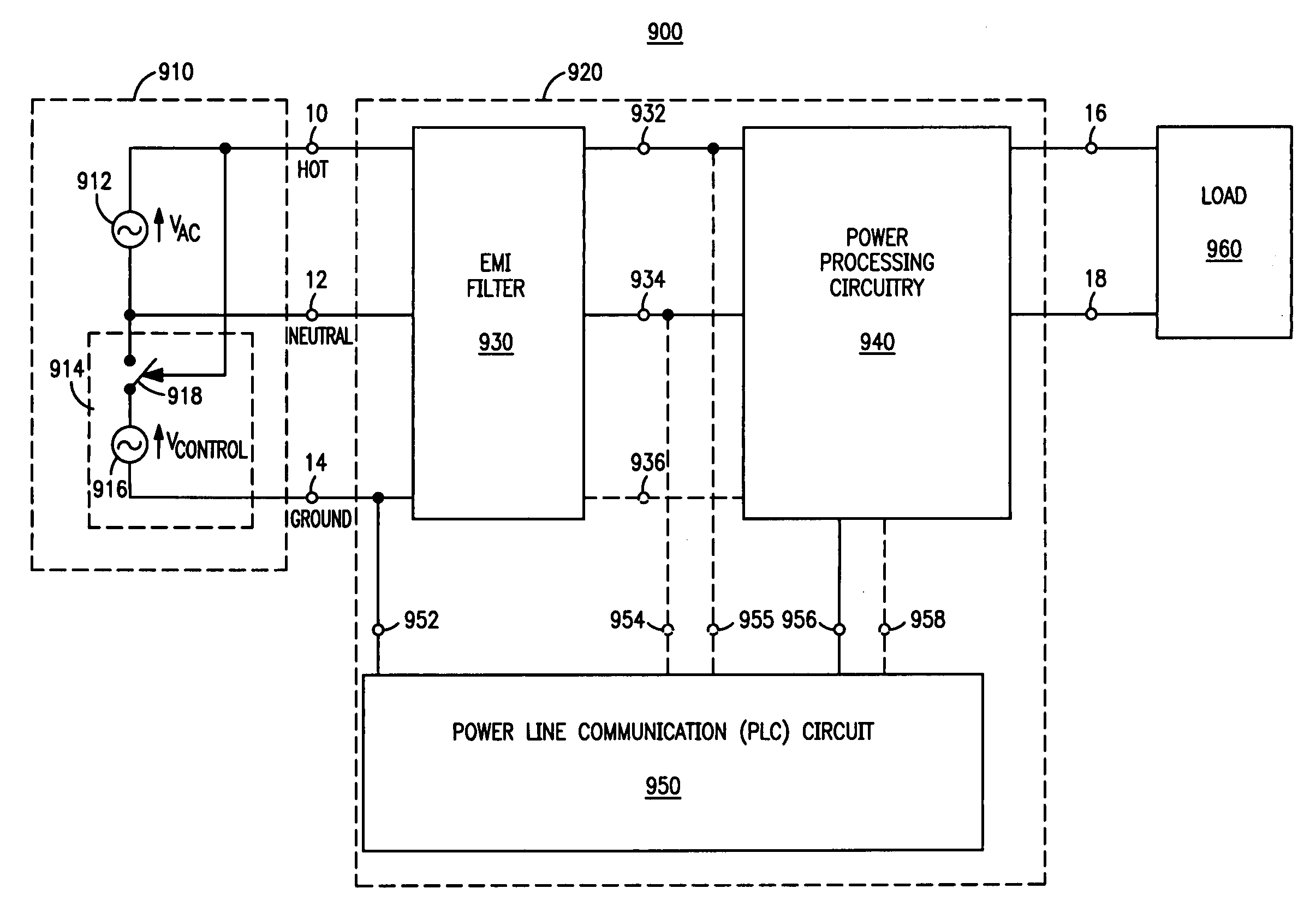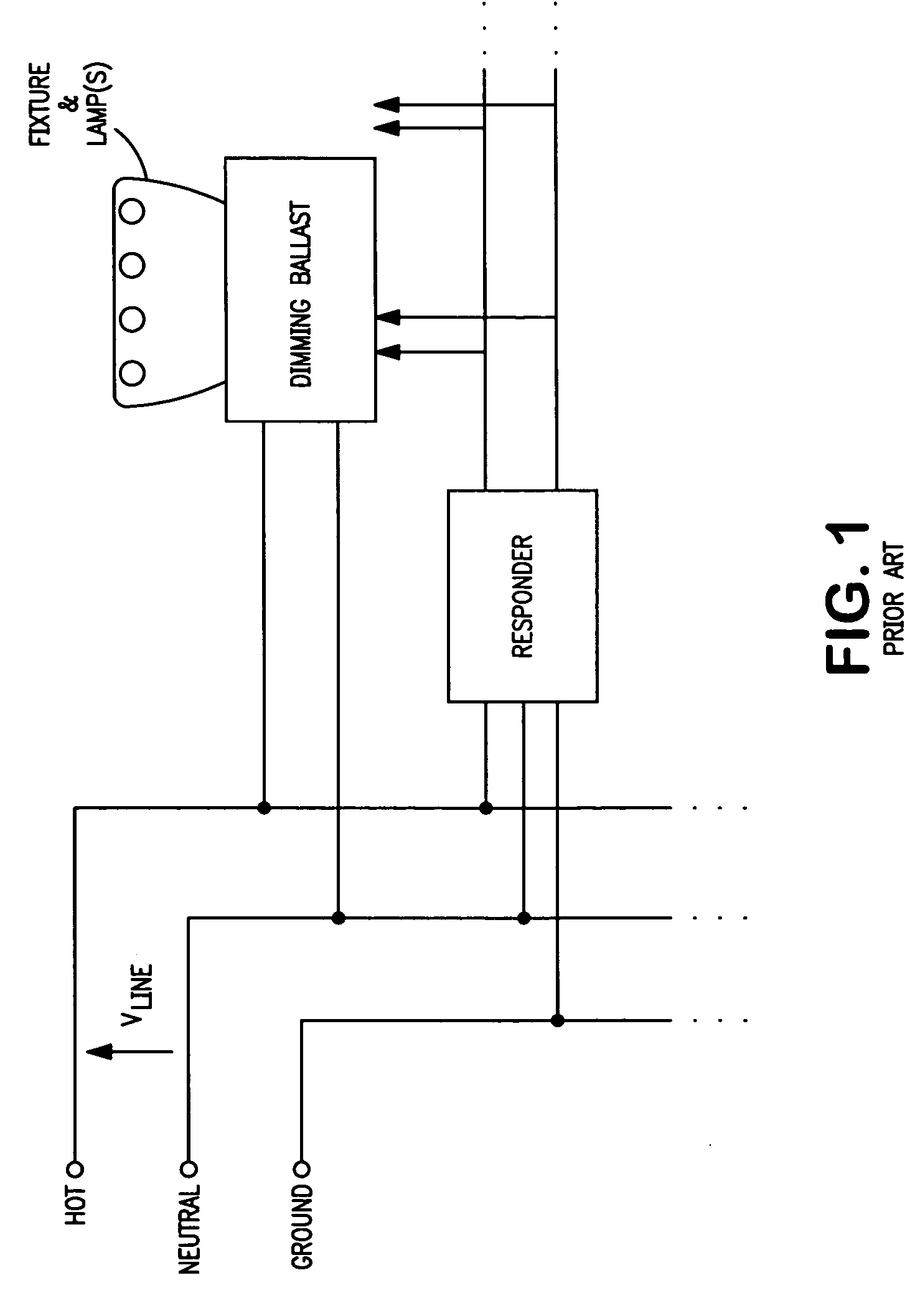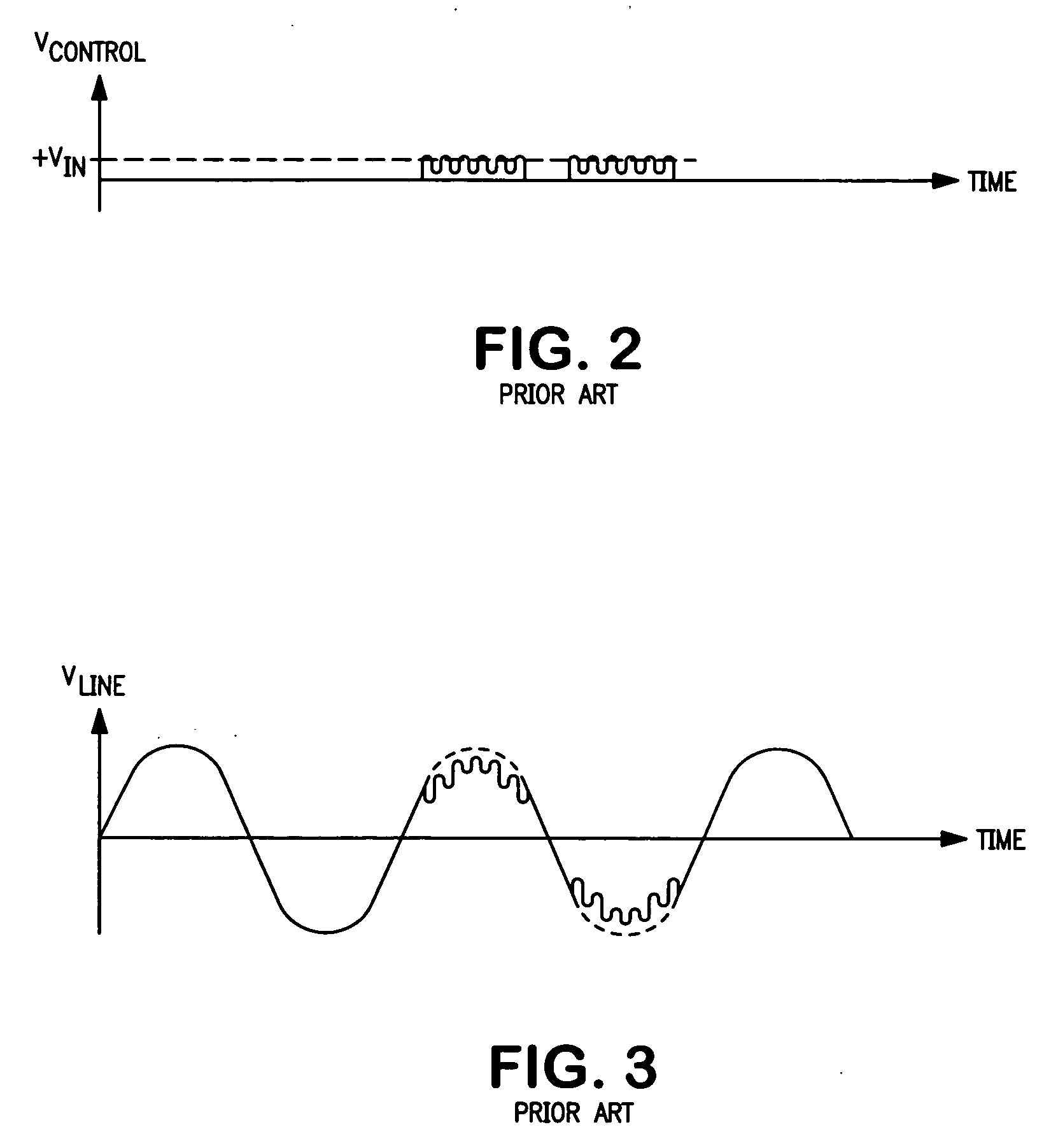Arrangement and method for providing power line communication from an AC power source to a circuit for powering a load, and electronic ballasts therefor
a technology of power line communication and circuit, which is applied in the direction of electric controllers, ignition automatic control, instruments, etc., can solve the problems of not being able to mechanically integrate the plc receiver within the housing of a standard ballast, and the receiver and processor of the carrier signal are not integrated within the controlled device,
- Summary
- Abstract
- Description
- Claims
- Application Information
AI Technical Summary
Benefits of technology
Problems solved by technology
Method used
Image
Examples
Embodiment Construction
[0027] The present invention relates to power line communication (PLC) methods and circuits for use with power supplies and electronic ballasts. In particular, the present invention relates to PLC methods and circuits that provide one-way communication from an AC power source to a power supply or electronic ballast (i.e., without providing feedback messages from the power supply or ballast to a control station within the AC power source). The present invention is generally applicable to AC line powered power supplies or electronic ballasts for commercial, industrial, and / or residential wiring that utilizes neutral and ground connections, and in which the power supplies or ballasts include an electromagnetic interference (EMI) filter and, preferably, a power factor correction circuit.
[0028] Specific preferred embodiments of the present invention related to arrangements that include controllable (dimmable) electronic ballasts for powering gas discharge lamps. Specific applications of...
PUM
 Login to View More
Login to View More Abstract
Description
Claims
Application Information
 Login to View More
Login to View More - R&D
- Intellectual Property
- Life Sciences
- Materials
- Tech Scout
- Unparalleled Data Quality
- Higher Quality Content
- 60% Fewer Hallucinations
Browse by: Latest US Patents, China's latest patents, Technical Efficacy Thesaurus, Application Domain, Technology Topic, Popular Technical Reports.
© 2025 PatSnap. All rights reserved.Legal|Privacy policy|Modern Slavery Act Transparency Statement|Sitemap|About US| Contact US: help@patsnap.com



